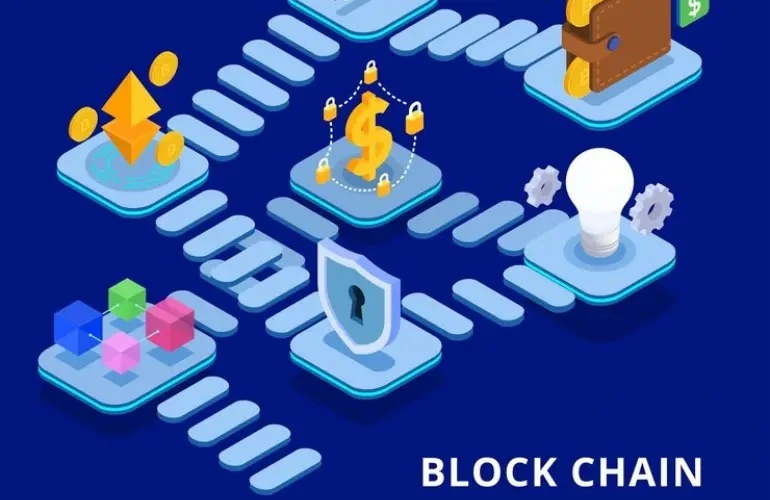Blockchain technology has revolutionized the way we think about transactions and digital assets. However, one challenge remains: how do we enable seamless transactions between different blockchains? The answer lies in blockchain bridges. In this blog post, we’ll explore what these bridges are, how they work, and why they’re crucial for the future of digital finance.
What are Blockchain Bridges?
These blockchain bridges are protocols that allow two different blockchains to communicate with each other. Imagine each blockchain as a separate island with its unique currency and language. A blockchain bridge acts like a translator and ferry, enabling people and assets to move between these islands. This technology is essential because it allows users to interact with different blockchain ecosystems, making it easier to use various cryptocurrencies and applications. For more details about Blockchain for accounting
How Do Blockchain Bridges Work?
These bridges work by locking assets on one blockchain and minting equivalent tokens on another. For example, if you want to use Bitcoin on the Ethereum blockchain, a bridge will lock your Bitcoin and create a corresponding amount of “Wrapped Bitcoin” (WBTC) on Ethereum. This WBTC can be used in Ethereum’s decentralized finance (DeFi) ecosystem, while the original Bitcoin remains safely locked. When you want to retrieve your Bitcoin, the WBTC is burned, and your Bitcoin is released from the bridge.

Benefits of Blockchain Bridges
Interoperability
One of the main benefits of block-chain bridges is interoperability. They enable different blockchain networks to work together, which is crucial for the growth and adoption of blockchain technology. This interoperability allows users to take advantage of the strengths of various blockchains, such as Bitcoin’s security and Ethereum’s smart contract capabilities.
Increased Liquidity
These bridges increase the liquidity of digital assets by allowing them to move freely between blockchains. This movement makes it easier for users to trade and invest in different cryptocurrencies, which can lead to more efficient markets and better price discovery.
Enhanced Functionality
By using block-chain bridges, users can access a wider range of services and applications. For instance, Bitcoin holders can participate in Ethereum’s DeFi platforms, lending, borrowing, and earning interest on their assets. This cross-chain functionality expands the utility of digital assets.
Cost Efficiency
These bridges can also reduce transaction costs. By allowing users to transact on blockchains with lower fees, bridges can make transactions more cost-effective. This benefit is particularly important as transaction fees on popular blockchains can be high during times of network congestion.
Security and Trust
While security can be a concern, many blockchain bridges employ advanced cryptographic techniques to ensure that assets are safely locked and transferred. However, it’s essential to choose bridges with robust security measures to minimize risks.

Frequently Asked Questions_FAQs
What is a blockchain bridge in simple terms?
A blockchain bridge is a tool that allows different blockchains to communicate and transfer assets between each other, similar to a bridge connecting two separate islands.
Why are blockchain bridges important?
They are important because they enable interoperability, allowing different blockchains to work together, which enhances the functionality and usability of digital assets.
Are blockchain bridges safe?
While many bridges are designed with security in mind, the safety of a bridge depends on its design and implementation. Users should choose bridges with strong security protocols.
Can these bridges be used for all cryptocurrencies?
Not all cryptocurrencies can be bridged, as it depends on the compatibility and support of the specific blockchains involved. However, many major cryptocurrencies can be transferred using bridges.
What are some popular blockchain bridges?
Some popular bridges include Wrapped Bitcoin (WBTC) for Bitcoin to Ethereum transfers, Binance Bridge for Binance Smart Chain, and the Polkadot and Cosmos bridges for inter-chain communication.
Conclusion
Blockchain bridges play a vital role in the digital asset ecosystem by enabling interoperability, increasing liquidity, and expanding the functionality of cryptocurrencies. As blockchain technology continues to evolve, the importance of these bridges will only grow, making them a key component of the future financial landscape.
For those interested in exploring these bridges further, resources like CoinGecko and Binance Academy offer valuable insights and guides.
By understanding and utilizing these bridges, users can take full advantage of the diverse and rapidly expanding world of digital finance. Whether you’re a casual user or a seasoned investor, these block-chain bridges offer a gateway to new opportunities and innovations in the crypto space.











